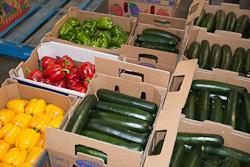
The world’s appetite for Australian fruit, nuts and vegetables has continued to grow with the value of Australian produce exports reaching almost A$2.8bn (US$1.8bn) for the first time in 2018-2019 financial year.
The figures, released Global Trade Atlas, represent a 27 per cent increase on the 2017-2018 financial year, the country’s highest year-on-year increase.
Australian nut exports cracked A$1bn (US$673m) in export value while table grape exports surpassed the half a billion-dollar mark reaching A$555m (US$373m) a 45 per cent increase on the 2017-2018 financial year.
The trade value for almonds alone reached A$675m (US$454m), making it the most valuable export crop with a year-on-year growth of 53 per cent, and fresh vegetable exports also grew 18 per cent over the last financial year and are now valued at $321m (US$216m).
One of the key markets which saw significant growth was China, Australia’s largest horticultural trading partner. Australian exports to China almost doubled from A$424m (US$285m) to A$834m (US$561m) in the last financial year.
Dianne Phan, head of trade at Hort Innovation, said these figures demonstrated not only the investment made by the industry, the government and Australian growers, but also the determination of homegrown producers to globalise their high-quality produce.
“We have worked incredibly hard together with industry, the Australian Government, our growers and our international trade partners to build demand for our premium produce in an increasingly competitive international market,” Phan said.
“As a result of in-market initiatives under the Taste Australia brand, consumer research projects, trade events and in-store retail campaigns, Australian horticultural produce has never been more popular - particularly in Asian markets, Europe, and the Middle-East where consumers enjoy high-quality products.
“Our work with industry partners, coupled with the Australian reputation for delivering high-quality produce that complies with rigorous standards along every stage of the supply chain has been a key driving force in this achievement.”



